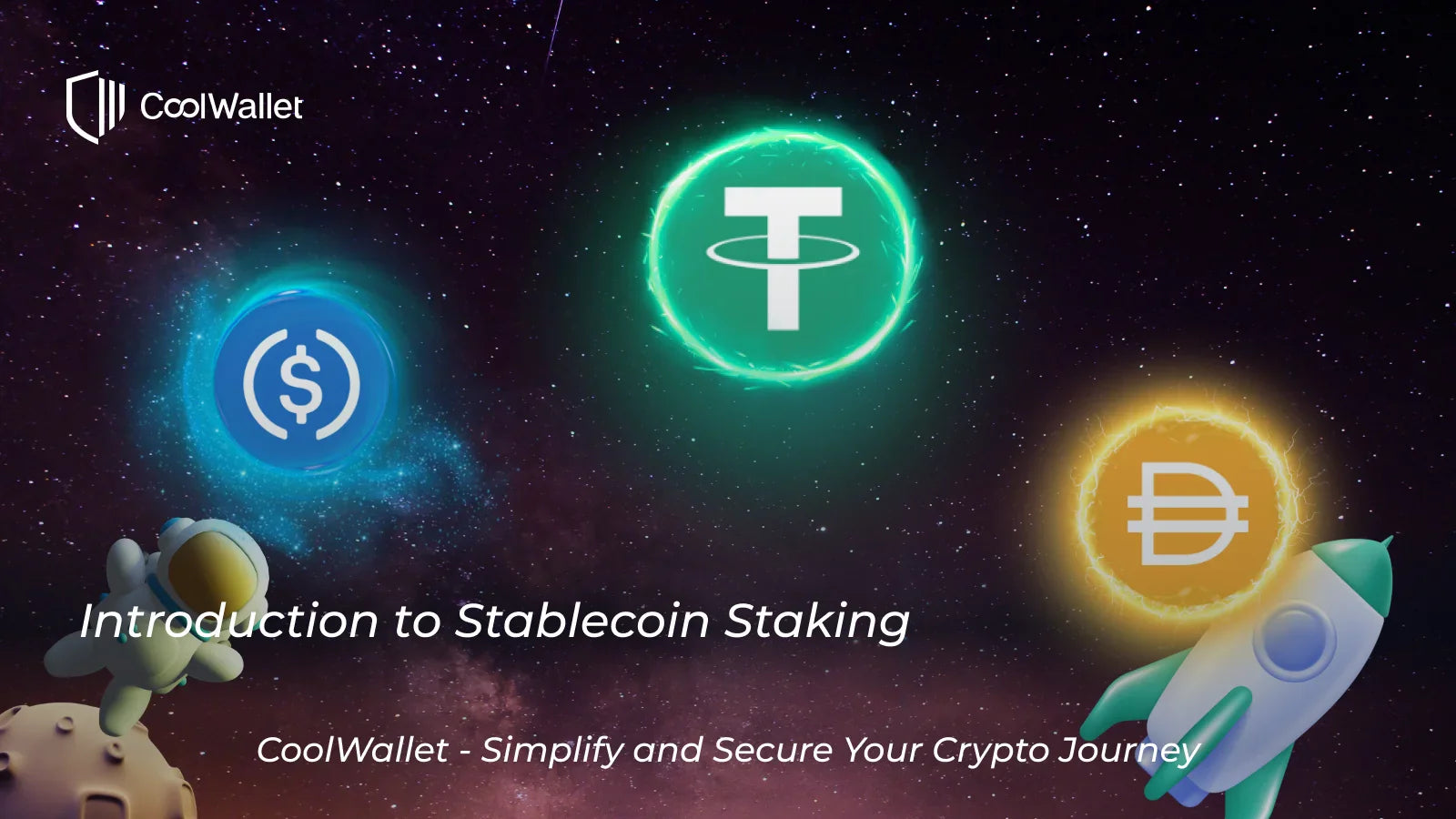Content
Introduction
Cryptocurrencies have opened up exciting new ways to grow your wealth, and one of the coolest options out there is stablecoin staking. Think of it as a way to earn passive income without the wild ups and downs of regular cryptocurrencies. In this blog, we’ll break down what stablecoin staking is, how it works, its perks, potential risks, and how you can dive in and start boosting your financial future.
Still using CoolWallet just to save your crypto? Earn more with CoolWallet App today!

How Does Stablecoin Staking Work?
Stablecoin staking is a way to put your stablecoins to work by locking them up in a blockchain network. Essentially, you lend out your stablecoins (like USDT, USDC, DAI, etc.) to lending platforms. By doing this, you provide liquidity to the platform and earn interest paid by borrowers. In return, you receive rewards, usually in the form of more stablecoins.
This process not only lets you earn passive income but also helps support the DeFi ecosystem. Since stablecoins are designed to maintain a steady value, staking them is generally a safer option compared to staking more volatile crypto.
Why Stake Stablecoins on CoolWallet?
- Earn Compounded Passive Income Safely: Benefit from compound growth on your passive income with CoolWallet’s advanced safety features.
- Full Control of Your Assets: Manage your assets in a non-custodial wallet and stake through decentralized platforms, without the intervention of centralized institutions.
- Support for Multiple Stablecoins Across Different Chains: CoolWallet supports USDT, USDC, and DAI on Ethereum, BSC, and Polygon, giving you plenty of flexibility and choice.
- User-Friendly: CoolWallet’s intuitive interface makes it easy for both beginners and experienced users to stake, manage, and retrieve stablecoins, ensuring a hassle-free experience.
- Lower Volatility: Stablecoins are less prone to the wild price swings seen in other cryptocurrencies, making them a more stable investment.
Risks and Considerations
- Smart Contract Risks: Staking involves using smart contracts, which can sometimes have bugs or be vulnerable to exploits. It’s important to stake through reputable platforms with audited smart contracts.
- Regulatory Risks: Cryptocurrency and stablecoin regulations can change, potentially impacting your staking activities and returns.
- Market Risks and Stablecoin De-pegging: While stablecoins are designed to maintain a stable value, there’s always a risk of de-pegging, where their value deviates from the intended peg due to market conditions or other factors.
Get Started with Stablecoin Staking via CoolWallet
Conclusion
Stablecoin staking offers an exciting way to grow your wealth in the crypto world without the crazy ups and downs of regular cryptocurrencies. By staking stablecoins like USDT, USDC, and DAI, you can earn passive income while enjoying a more stable investment. CoolWallet makes it easy and secure with its user-friendly interface and support for multiple stablecoins on different blockchain networks. Ready to Start? Start boosting your financial future today!
Frequently Asked Questions
Q1. What are Stablecoins?
Stablecoins are a type of crypto that keeps its value steady by being tied to a reserve asset, like a traditional currency or another commodity. This stability makes them a great choice for investors who want to avoid the wild price swings of crypto like Bitcoin or Ethereum.
- Fiat-collateralized Stablecoins: These stablecoins are backed by a reserve of fiat currency, such as USD, held in a bank. Examples include USDT (Tether) and USDC (USD Coin).
- Crypto-collateralized Stablecoins: Backed by other cryptocurrencies, these stablecoins use mechanisms to maintain their peg. DAI is a prominent example, backed by a mix of cryptocurrencies.
- Algorithmic Stablecoins: These stablecoins rely on algorithms and smart contracts to control the supply and demand, ensuring price stability without direct backing by a reserve asset.
Q2. Which Stablecoins Can I Stake on CoolWallet?
You can stake USDC, DAI, and USDT on the Ethereum, Polygon, and BSC networks.
Q3. How Do I Calculate Earnings?
Rewards start accumulating as soon as you begin staking and are automatically added to your total staked amount, allowing for compound growth. The Annual Percentage Rate (APR) fluctuates based on supply and demand in the stablecoin lending market on the decentralized finance platform.Rewards start accumulating as soon as you begin staking and are automatically added to your total staked amount, allowing for compound growth. The Annual Percentage Rate (APR) fluctuates based on supply and demand in the stablecoin lending market on the decentralized finance platform.
Q4. Can I Unstake My Stablecoins Anytime on CoolWallet?
Yes, you can unstake your stablecoins anytime by initiating the unstaking process through CoolWallet’s interface.
Q5. What Are the Risks of Stablecoin Staking?
The main risks include smart contract vulnerabilities and potential interruptions in DeFi platform services. CoolWallet integrates with AAVE, a DeFi platform whose smart contracts have undergone multiple audits and tests to ensure safe operation. Learn more. Learn more


